I’ll secretly tell you a secret of watering your flowers. From now on, your flowers will neither be dry nor waterlogged, and will grow better and better!
1. Understand the basic terms
1. Water deduction
Withholding water means not watering or watering less during the growth of flowers to limit their nutritional growth, so that nutrients can be accumulated, which is conducive to the differentiation of flower buds. For example, when the new shoots of bougainvillea and plum blossoms (peach, chrysanthemum, jasmine, winter coral, bergamot, orange, etc.) grow to about 20 cm, they start to "withhold water", that is, not watering for 2-3 days. Due to lack of water, the top leaves of the plants begin to wilt, and then a small amount of water is applied to restore the leaves. After repeating 2-3 times, the growth of the top of the branches is inhibited, so that nutrients are concentrated and flower bud differentiation is promoted.
2. Backwater
Backwatering means that after applying fertilizer the night before, you must water it again the next morning. It can promote the root system to absorb fertilizer and avoid fertilizer damage. Because the fertilizer applied the night before has penetrated overnight, the fertilizer concentration is too high, which is not only difficult for the root system to absorb but also burns the seedlings. After pouring "backwatering", the fertilizer in the soil is diluted, which is beneficial for the root system to absorb. (It is more suitable for the following flowers: Western (Chinese) azalea, Clivia, Camellia, White Orchid, Jasmine, Pearl Orchid, Michelia, etc.)
3. Waist-breaking water
"Waist-to-waist water" is also called "half-water", which means that the soil in the pot is "wet on top and dry on the bottom", that is, the upper half is wet and the lower half is dry. Due to poor soil drainage, the soil in the pot accumulates water, and the water poured cannot leak out of the pot hole.
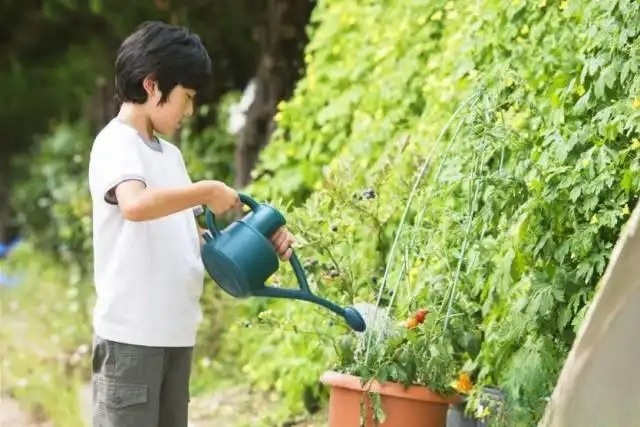
4. Hard water and soft water
Water is divided into hard water and soft water according to its salt content. Soft water refers to water with a hardness of less than 8 degrees; hard water refers to water with a hardness of more than 8 degrees and a higher salt content. Soft water without salt is suitable for watering.
5. See dry and wet
For some flowers that like moisture, such as azalea, camellia, Michelia, gardenia, Milan, etc., you should water them according to the principle of "water when dry and water when wet". When the surface of the cultivation medium turns white, water it until it is moist. The potting soil should not be too dry or too wet for a long time, just keep it "moist".
6. Water thoroughly when dry
For potted flowers such as orchids, wintersweets, and geraniums that prefer dryness and fear waterlogging, you should water them according to the principle of "dry thoroughly and water thoroughly". You can only water them when the cultivation medium is dry. "Water thoroughly" means not to water "all the way down", but to make the pot soil completely wet from top to bottom. If you don't water thoroughly, the roots will not be able to absorb water, which will affect their growth.
7. Better dry than wet
For five-needle pine, black pine and xerophytes, watering should be based on the principle of "better dry than wet". Watering can only be done when the soil is completely dry, and water must not accumulate.
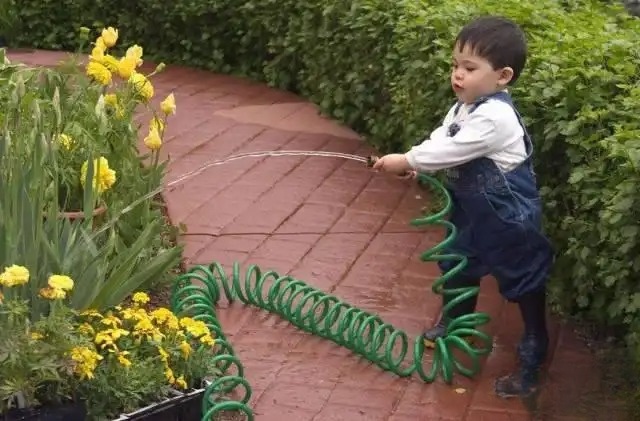
8. Soil moisture
It is usually expressed as a percentage of soil moisture. The water needed for flower growth is mainly absorbed from the soil, so the soil moisture is generally 60-70% of the field water holding capacity.
9. Field water holding capacity
Field soil has a maximum water holding capacity. This indicator is collectively called field water holding capacity. Its value is about 25%, which is the limit of soil water holding capacity.
10. Air humidity
The relative humidity is usually expressed as a percentage of air humidity. During the day, the relative humidity is lowest in the afternoon when the temperature is highest, and highest in the early morning.
Generally, flowers require an air humidity of about 65-70%, while plants in arid and desert climates require much lower humidity. Greenhouse flowers, tropical foliage plants, tropical orchids and other species with aerial roots, as well as ferns and other moisture-loving plants, require an air humidity of about 70-80%.
11. Dry air
Air drought: Due to air drought, the water in the flowers evaporates a lot. At this time, the lack of water in the soil will cause the plants to wilt temporarily due to water imbalance, but they will not die.
12. Soil drought
Soil drought: Atmospheric drought often causes soil drought. The soil loses water for a long time and is not replenished in time, which cannot supply the water needed by flowers, leading to withering and death.
13. Waterlogging
Due to poor soil drainage and excessive water accumulation, air cannot enter the soil, which will cause the plants to suffocate and die over time.
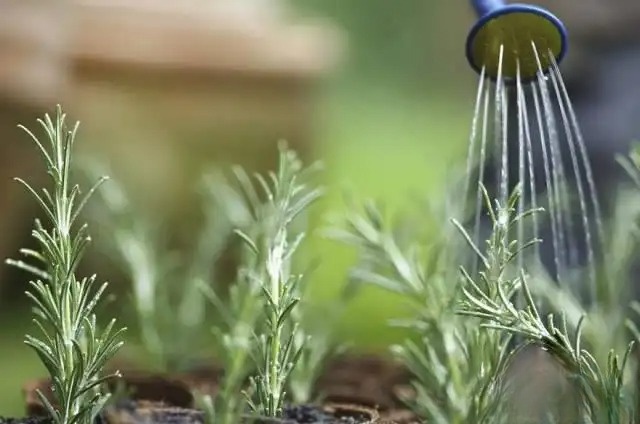
▼
2 Six principles of watering
First look at the type: Different flowers have different water requirements, so watering should vary depending on the flower.
Common cacti, aloe vera, sedum and other flowers have underdeveloped root systems and should be watered less. Some flowers and trees have a dense layer of fluff on their leaves, such as begonia, gloxinia, and cattail flower. It is not advisable to spray water on the leaves, otherwise the water will be difficult to evaporate and they will easily become moldy and sick. There are also many flowers with small leaves and slow water evaporation, so less watering will help them bloom more, such as crape myrtle, osmanthus, and photinia. In addition, flowers and trees should be watered more during the growth season and bud formation period, and less watering during the flowering period. Freshly pruned flowers should be watered less, otherwise the branches and leaves will grow empty and affect the shape. Usually smaller plants or newly propagated plants are not drought-tolerant; larger plants or already formed plants are more drought-tolerant.
Second, look at the location: flowers placed outdoors require more water, while flowers placed in a greenhouse require less water.
Third, look at the flower pot: a small pot is shallow, so water it less but more frequently; a clay pot has good water permeability, and the soil in the pot will dry out easily, so water it frequently; a stone pot or a glazed pot does not easily permeate water, so do not water it too frequently, as long-term accumulation of water will cause the roots of flowers to rot.
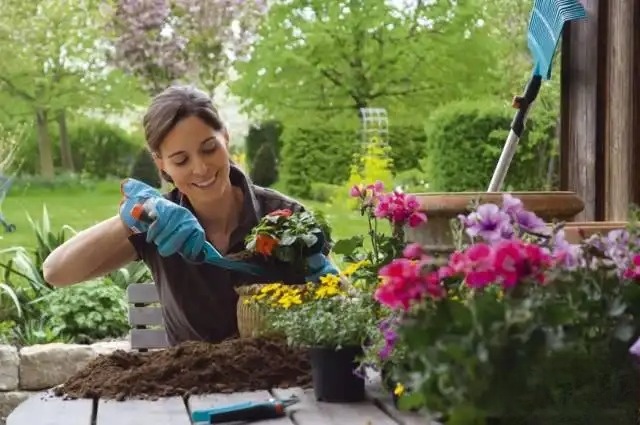
Third, look at the season: the temperature is different throughout the year, and the amount of water used for watering flowers should also be different. In spring, the weather is cold and warm, and the weather is changeable. At this time, potted flowers begin to sprout and take root, and they need a lot of water. Keep the pot soil moist; in summer, the temperature is high and dry, and the evaporation is fast, so watering should be doubled; in autumn, watering should be appropriately reduced; in winter, most flowers and trees are dormant, so just keep the pot soil slightly moist, and water less or not water unless it is dry.
Fourth, check the weather: The closer the water temperature is to the soil temperature, the better. When the difference between the soil temperature and the water temperature is large, you cannot water the flowers to avoid the cold water damaging the root system. The most practical way is to store some spare water in a watering pot or shallow water tank near the potted flowers, which is conducive to naturally adjusting the difference in water temperature. Under normal circumstances, the difference between the water temperature and the soil temperature should be kept within 5℃, so that the root system will not be damaged. It is suitable to water in the morning and evening in the hot season, and around noon in winter. Water more when it is sunny and dry for a long time, and do not water when it is cloudy and rainy for a long time. Also pay attention to draining the water in the pot.
Fifth, check the water quality: The water required by flowers and trees should be natural precipitation without pollution. Rainwater and snow water are the first water for watering flowers. The tap water used in daily life has been purified by adding purifiers during the purification process. It is not suitable for direct watering of flowers. It is best to store it for one or two days to allow the chlorine in the water to evaporate before watering. Or put a piece of vitamin C in a basin of tap water, which can also eliminate the chlorine in it in a short time. Water for boiling eggs, tea water, fermented rice water, fish water, beer, sugar water, etc., all contain rich nutrients suitable for the growth of flowers and trees, and are good water for watering flowers.
Sixth, look at the soil: The nature of the culture soil is different, and the water retention capacity varies greatly, so the amount of watering should also be different. Sandy and loose soil has poor water retention capacity, so more water should be given; heavy clay soil has strong water retention capacity, so less water should be given.
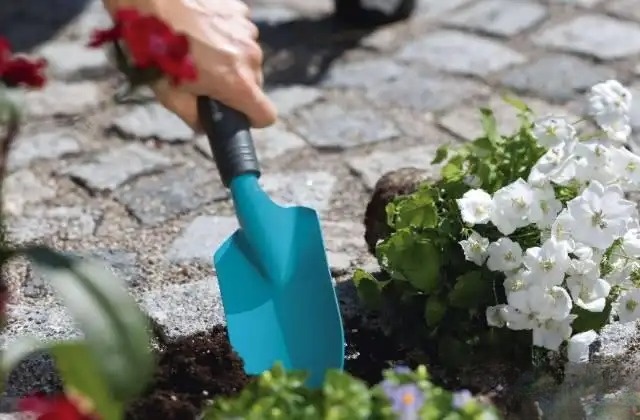
▼
3. Watering precautions
1. Generally, it is suitable to water the roots of flowers. Flowers for viewing leaves can be sprayed with water on the leaves, but flowers for viewing flowers, such as cyclamen and Clivia, should not be sprayed with water on the leaves. Flowers with dense hairs on their leaves, such as begonia, gloxinia, and cattail, should not be sprayed with water on the leaves, otherwise the water will be difficult to evaporate and they will easily become moldy and sick.
2. Do not over-pamper flowers. Many flower lovers have their flowers waterlogged due to frequent watering, which causes the roots to rot and die. At the same time, you should not water the flowers regularly without considering their growth habits. This method can also easily lead to the death of flowers. Flowers with similar living habits can be placed in nearby areas, and watering records should be kept to facilitate watering management.
3. When watering flowers and trees, do not water them lightly. The result is that the soil is often wet on the top and dry on the bottom, with the surface soil wet and the inside soil dry. In fact, the roots of the plants do not get much water at all. Some people only spray water on the leaves when watering, and do not water the pot soil, and the result is the same. When watering a "dry pot", you think that the pot has been watered thoroughly as soon as you see water coming out of the bottom of the pot. In fact, the soil in the pot is wet around the edges for a long time, and dry in the middle, forming a "hollow radish". The roots of flowers and trees do not absorb water evenly.
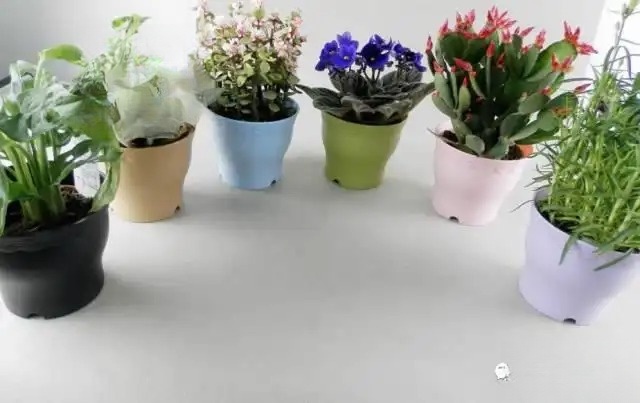
▼
4 Common watering methods
Immersion method: Immerse the flower pot in a basin of water and let the water seep into the soil through the holes at the bottom of the pot until the soil is completely soaked. This method is often used for newly potted flowers and seedlings in pots to prevent watering from the outside from dispersing the soil or displacing the seeds, affecting germination.
Watering with a watering can: Use a watering can to pour water directly onto the surface of the pot. This method is often used for larger flowers and trees.
Watering with a watering can: Use a watering can to spray water on the leaves and pot surface of the plant. This method is often used for newly potted seedlings, cuttings and foliage plants. However, some flowers are particularly sensitive to water, such as Gloxinia, Calceolaria, Begonia, etc., whose leaves have thick hairs. It is not easy to evaporate after spraying water, and the leaves are easy to rot; the leaf buds on the top of the cyclamen bulb and the flower buds of gerbera are easy to rot and wither after being wet, so it is not suitable to use water spray. For blooming flowers, it is also not advisable to spray too much water, otherwise it is easy to cause the petals to rot or affect fertilization, reducing the fruiting rate.

▼
5 Common watering methods
Immersion method: Immerse the flower pot in a basin of water and let the water seep into the soil through the holes at the bottom of the pot until the soil is completely soaked. This method is often used for newly potted flowers and seedlings in pots to prevent watering from the outside from dispersing the soil or displacing the seeds, affecting germination.
Watering with a watering can: Use a watering can to pour water directly onto the surface of the pot. This method is often used for larger flowers and trees.
Watering with a watering can: Use a watering can to spray water on the leaves and pot surface of the plant. This method is often used for newly potted seedlings, cuttings and foliage plants. However, some flowers are particularly sensitive to water, such as Gloxinia, Calceolaria, Begonia, etc., whose leaves have thick hairs. It is not easy to evaporate after spraying water, and the leaves are easy to rot; the leaf buds on the top of the cyclamen bulb and the flower buds of gerbera are easy to rot and wither after being wet, so it is not suitable to use water spray. For blooming flowers, it is also not advisable to spray too much water, otherwise it is easy to cause the petals to rot or affect fertilization, reducing the fruiting rate.
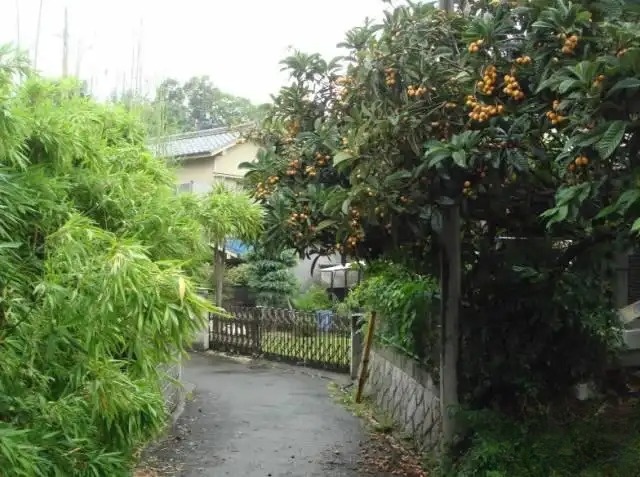
▼
6 How to prevent waterlogging when watering flowers
Cacti, succulents, and flowers and plants with fleshy roots are drought-resistant but afraid of waterlogging, such as cactus, prickly pear, aloe, orchid, peony, herbaceous peony, Clivia, dahlia, gloxinia, sedge, cyclamen, and strelitzia. Waterlogging is a major cause of death.
Some woody flowers are also very afraid of waterlogging, such as plum blossoms, longevity peach, osmanthus, azalea, wintersweet, Michelia, bougainvillea, Araucaria, Brazilian wood, Daphne odora and crabapple, etc. If they are soaked in water for 3-5 days, they will be in danger of death and difficult to save.
Some flowers that like moisture are also afraid of waterlogging, such as chrysanthemum, jasmine, Milan, asparagus fern, etc. If the soil in the pot is too wet or exposed to rain for a long time, the roots will suffocate and die.
The water-resistant flowers and trees include : variegated caladium, Cyperus rotundus, Saxifrage, banyan tree, bamboo palm, cordyline, Aspidistra, Monstera, rubber tree, Calla lily, Bromeliad, variegated Duckweed, Guangdong Dieffenbachia and various ferns, etc.
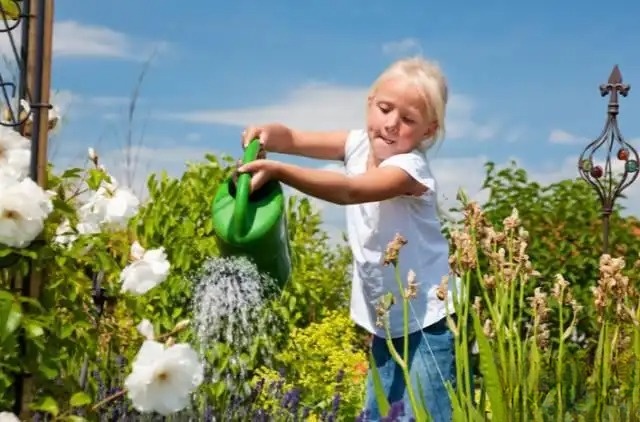
Flood prevention measures:
(1) Flowers and trees that are afraid of waterlogging should be planted in good terrain, preferably in high and dry places, and never in low-lying areas.
(2) For ground-planted flowers and trees that are at risk of waterlogging, drainage ditches should be dug before the rainy season arrives, and the roots of the plants should be raised with soil. It is best to surround precious flowers and trees with plastic sheeting after the soil is raised.
(III) During the rainy season, potted flowers should be moved to a sheltered place as soon as possible. If there are too many potted flowers to move in time, they should be turned over on the spot to prevent water accumulation.
(IV) Before planting flowers and trees in pots, you should make a large drainage hole in the bottom of the pot, cover the hole with a piece of window screen, and add a layer of bricks, charcoal slag or charcoal blocks as big as dates to allow excess water to drain out at any time. Before planting flowers and trees that are afraid of waterlogging, you should also dig a deep tree pit and lay a thick layer of gravel or charcoal slag at the bottom of the pit to facilitate water seepage.
(V) When watering flowers and trees that are afraid of waterlogging, you must follow the principle of watering when the soil is dry and watering when the soil is wet, and try to use the method of more spraying and less irrigation to flood the water. When watering, you must prevent "water from blocking the middle" and prevent water from accumulating in the pot.
(6) For flowers and trees that have been affected by waterlogging, the wet soil should be knocked out in time, the wet mud should be removed, the plants should be placed in a cool and ventilated place, and water should be sprayed on the branches and leaves appropriately. After the plants have recovered their vitality, the soil should be replaced and the pots should be repotted.
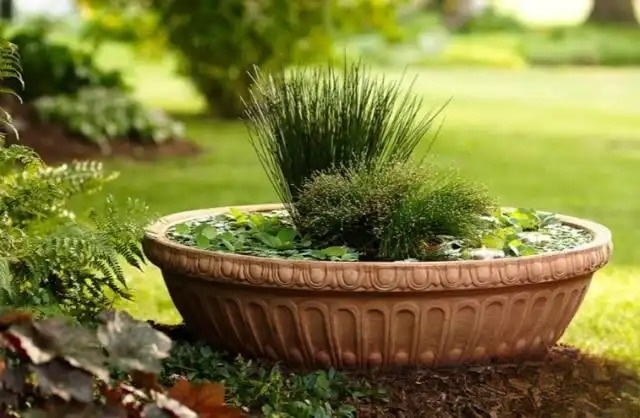
▼
7How to water herbaceous foliage plants?
1. Watering time:
Water in the morning or afternoon in spring and autumn. Water in the morning and evening when it is cool in summer, and water in the afternoon when it is warm in winter. The watering time should be chosen so that the water temperature is close to the soil temperature, and the temperature difference should not exceed 5℃ to prevent the soil temperature from changing suddenly due to watering, which may damage the root system and affect its absorption function.
2.
The frequency and amount of watering depends mainly on seasonal changes, weather conditions and plant growth.
In spring and autumn, the plants grow rapidly and require a lot of water, but the temperature is not very high. The amount of water lost is small, so watering should be appropriate, not too much or too little, generally watering once a day is enough.
In summer, the light is strong, the temperature is high, and the water evaporation is large, so you should water the plants frequently, generally once in the morning and once in the evening.
The temperature is low in winter. For outdoor herbaceous foliage plants, their growth slows down and their water requirements decrease. They can be watered once every 2 to 3 days. However, for greenhouse herbaceous foliage plants, it is the peak growth season, so it is advisable to increase watering. The specific watering time should be flexibly controlled according to the daily weather conditions. If it is sunny or windy, the water will be lost quickly, so the amount of watering should be increased, while on cloudy days, the amount of watering should be reduced.
Watering should be moderate before and after seed germination, with the principle of small amounts and multiple times. When entering the seedling growth period, the amount of watering should be moderately reduced, and water should be intentionally withheld to prevent the seedlings from growing too tall, which is conducive to bud formation and preventing the plants from growing too tall.
During the peak growth period of seedlings and the peak flowering period, sufficient water should be applied to meet the needs of the plant's vigorous metabolism. However, for those species that are prone to flower and fruit drop, the amount of watering should be controlled and not too much.
During the seed formation period, appropriately reducing watering is beneficial to seed maturation.
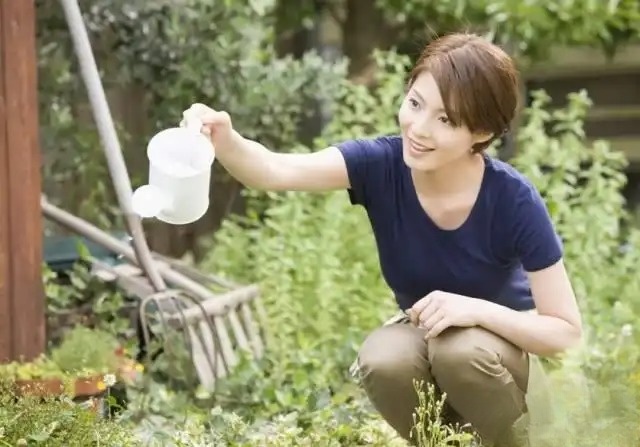
Show it to those flower lovers who need it